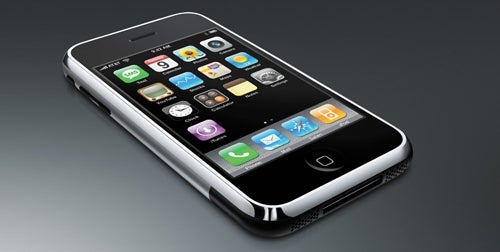Whether a bank or credit union has $1 billion or $100 million in assets, customer expectations are all the same.
What they’re looking for, increasingly, is the ability to manage their money on the go. And while the ATM was once the symbol of cutting-edge banking technology, today’s customers want to manage their transactions from their mobile phones.
Just look at the numbers. More than 13 percent of households accessed their bank account via a mobile device in the second quarter, according to a report from The Nielsen Co. That’s up from 11.6 percent during the first quarter.
Meanwhile, the adoption rate of mobile phones continues to climb.
All that adds up to a need for change in the banking industry, says Deborah Sumner, vice president and financial services practice lead for The Nielsen Co.
“I think banks will have to embrace [mobile banking] regardless of their size because it’s happening whether they like it or not,” Sumner said. “Customers are expecting it.”
Out In Front
Many local institutions are already meeting those expectations. One early adopter is Fitchburg-based Workers’ Credit Union, which launched its iPhone app about a month ago, according to Christopher Saari, assistant vice president and online banking manager for the credit union.
About 30 days into the app going live on iTunes, there had been about 300 downloads.
“People love it,” Saari said. “We’re thrilled.”
The app — which is available for free — allows the credit union’s 66,000 members to check their account balances, transfer money between accounts and pay their bills. They can also search for nearby ATM locations using the GPS technology on the phone.
WCU worked with an already familiar software vendor as one of six financial institutions to a test the app. WCU was a good test case, according to Saari, because it already has more than 2,000 people using its mobile banking product.
Saari acknowledges that keeping up with the pace of technological change can be difficult. But so too can changing people’s perceptions of credit unions.
“People don’t feel credit unions have technology, but we do,” he said. “With rolling out the iPhone app, it puts us in the same league as the bigger banks.”
The story is much the same at Marlborough-based Digital Federal Credit Union. With nearly $3.6 billion in assets and 354,000 members, DCU is one of the biggest financial institutions in the region, and has the resources to move into the mobile space.
The latest technology rolled out by DCU is its mobile remote deposit capture, which allows a member to make a deposit by just taking a picture of a check.
Since launching the remote deposit earlier this year, there have been 50,000 deposits using the technology representing $40 million, according to Craig Roy, senior vice president of support services at DCU. Approximately 20,000 members are using the remote deposit.
DCU also has a free app for both the Android and iPhone.
While developing these new-fangled technologies may seem costly, Roy says it really isn’t and it will only get cheaper as adoption rates increase.
“The technology is not cost-prohibitive and as financial institutions continue to adopt, the cost will be driven down,” he said.
And there are the savings to be found.
“About three months ago, electronic deposits coming in surpassed paper checks,” Roy said. “It’s much more efficient and cost-effective to process an electronic deposit.”
Next on the horizon for DCU is two-way messaging.
Text messaging has largely been used by banks and credit unions already, but most communication is one way — from the bank to the customer. DCU hopes to move the technology forward so that members can take action once they receive a text from their credit union. For example, Roy said, if a member gets a text that says their balance is low, in the future they’ll be able to text back to transfer funds and bump up their balance.
Workers’ and Digital are smart in their early adoption, according to Sumner at The Nielsen Co.
The “big fallacy” for financial institutions is that it’s only the younger demographics — the so-called millenials — that are taking advantage of mobile technology. That just isn’t the case, she said. A significant chunk of the mobile banking population is made up of what Nielsen has labeled country club communicators.
“It’s basically the parents of the millenials,” she said. “They’re the ones buying the smartphones, they have the money, they have the means.”
According to Nielsen’s stats, country club communicators make up 12.8 percent of all mobile bankers.
The Future
So what’s next after the iPhone and iPad app that lets you transfer money from account to account? Plenty, according to Sumner. Directly on the horizon is “tap and go” technology, where a person’s debit or credit card is tied to his or her cellphone. She also predicts an increase in two-way communications between banks and their customers via text message, just as DCU is contemplating.
Sumner notes that embracing mobile technology doesn’t have to spell the end of the branch.
“I think banks have to decide what their strategy is moving forward,” she said. “Mobile banking can complement the branch structure.”
From DCU’s perspective, mobile banking actually extends the organization’s reach.
“We have members around the world who only touch us through mobile banking,” Roy said. “We’re not about to abandon the branch program, but we do think (mobile banking) is a great way to compete.”

